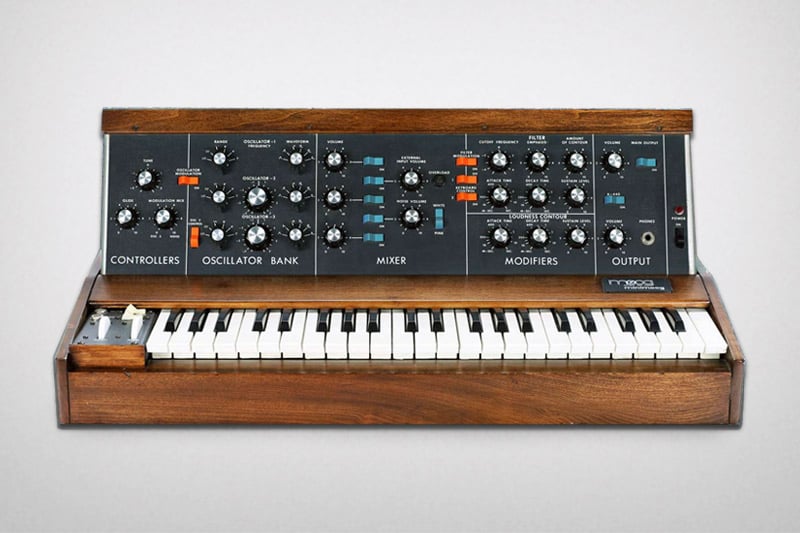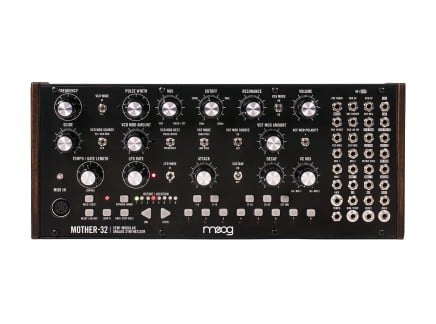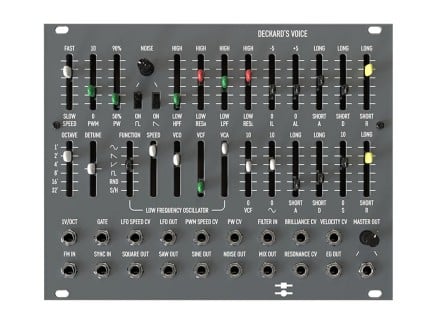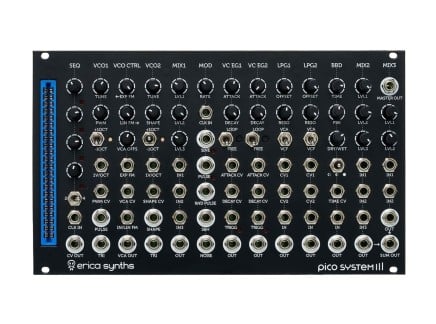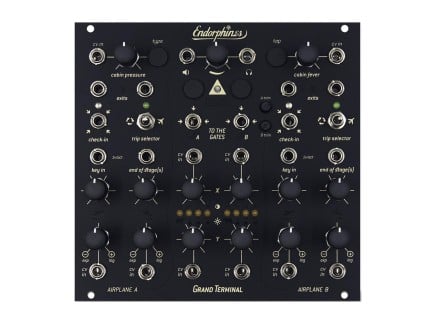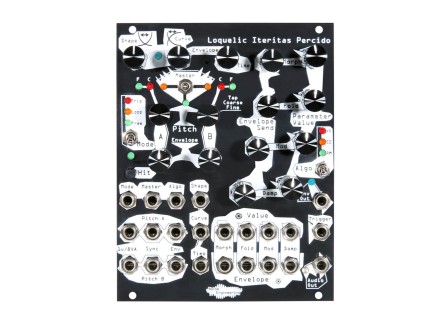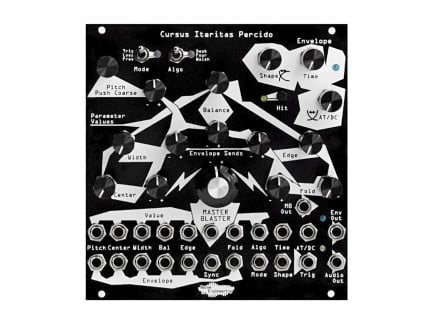Ever think about getting into modular? Or wonder where to start with modular synths? We often get inquiries from people who want to get into modular synthesis about the best place to start building a system. With the number of modules available today, that seems to be a perfectly reasonable concern—and to be honest, in such an open-ended and flexible environment as Eurorack, there is no one correct answer.
That being said, there are some options that provide a much faster way to start making music and creating obscure sounds right off the bat. Among such is a group of modules known as Full Synthesizer Voices. These modules contain several major components necessary for shaping sounds, often with the exception of control elements such as keyboards and/or sequencers (although that’s not always the case).
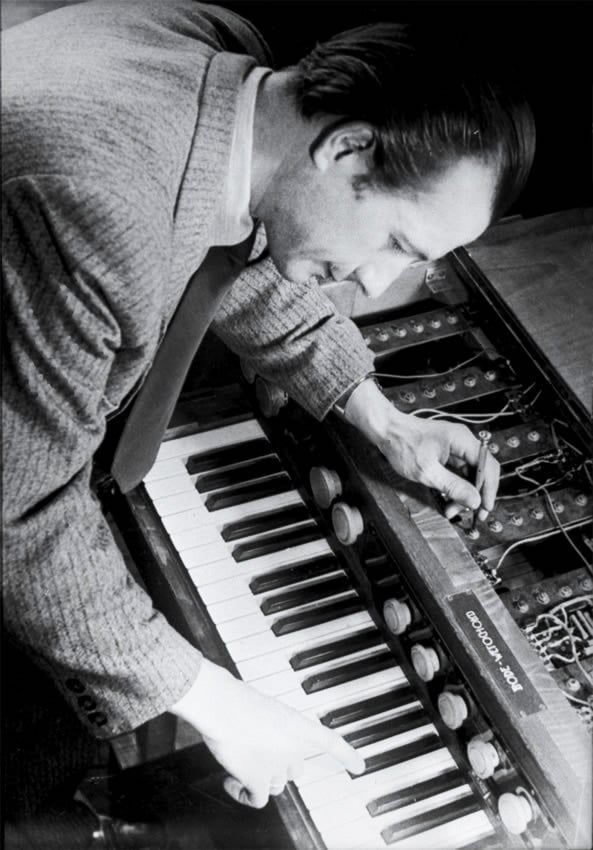
So what is a Synthesizer Voice?
To get a better picture we need to take a slight detour and peek at the history of synthesizers. It is not particularly easy to identify a specific point in time or a place when synthesizers became a reality. Just as it happens with ideas, several brilliant minds in different parts of the world started tackling the prospect of creating electronic music instruments on the edge of the 19th and 20th century. From that moment, variations on the concept started spreading in all directions, resulting in some extraordinarily bizarre and fascinating instruments. However, much of the defining principles of synthesizers, as we know them today, can be traced to the work of one man—Harald Bode.
Bode grew up in Hamburg, Germany in a family where music played a very important role. After he lost his parents at the age of 18, he dedicated himself to studying mathematics, physics, and natural philosophy at the University of Hamburg. After graduation, Harald started working on electronic music instruments, and in 1937 he created the Warbo-Formant Organ—a radical new polyphonic instrument that produced entirely electronic tones. Like many modern synthesizers, it had a system of dynamically allocating four discrete tone generators to all of the 44-keys of the keyboard. Between that point and the late ‘50s, Bode developed several more ingenious electronic instruments, most of which were mono- or duo-phonic. This was due to many difficulties associated with stabilizing the tuning of the polyphonic Warbo.
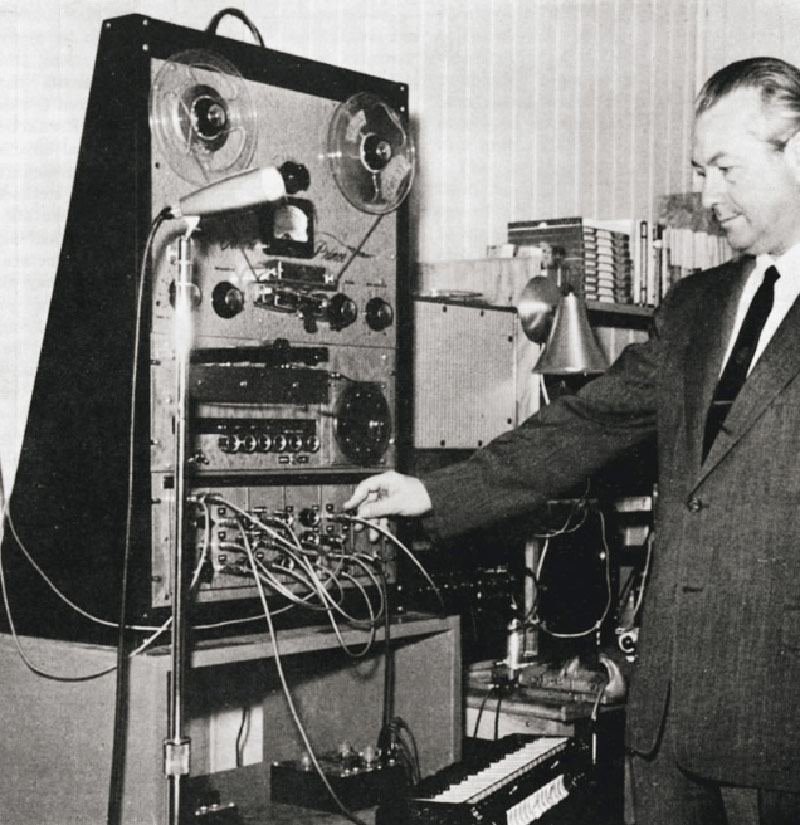 Bode with his Audio System Synthesizer
Bode with his Audio System Synthesizer
In 1960 Harald presented “A New Tool for the Exploration of Unknown Electronic Music Instrument Performances”, later known as Audio System Synthesizer, to the Audio Engineering Society—thus the modular synthesizer was born. This invention influenced many of Bode’s contemporaries, including Vladimir Ussachevsky, Robert Moog, and Don Buchla, who later implemented many of the concepts and ideas developed by Bode into their own work. Over the next few years, Harald closely collaborated with Moog, and his designs became integral in the creation of what we know as Moog Modular Synthesizer.
Although the open exploratory nature of modular synthesizers resonated with several composers and musicians who tried to break away from tradition, the majority were still looking for ways of adapting those new synthetic timbres to familiar musical forms. A specific way of interconnecting a VCO, VCF, VCA, and EG proved to be a great combo for sculpting new timbres while still generating individual notes that could be organized much like notes on any traditional musical instruments. This particular combination of modules became a definitive blend that we now know as Synth Voice.
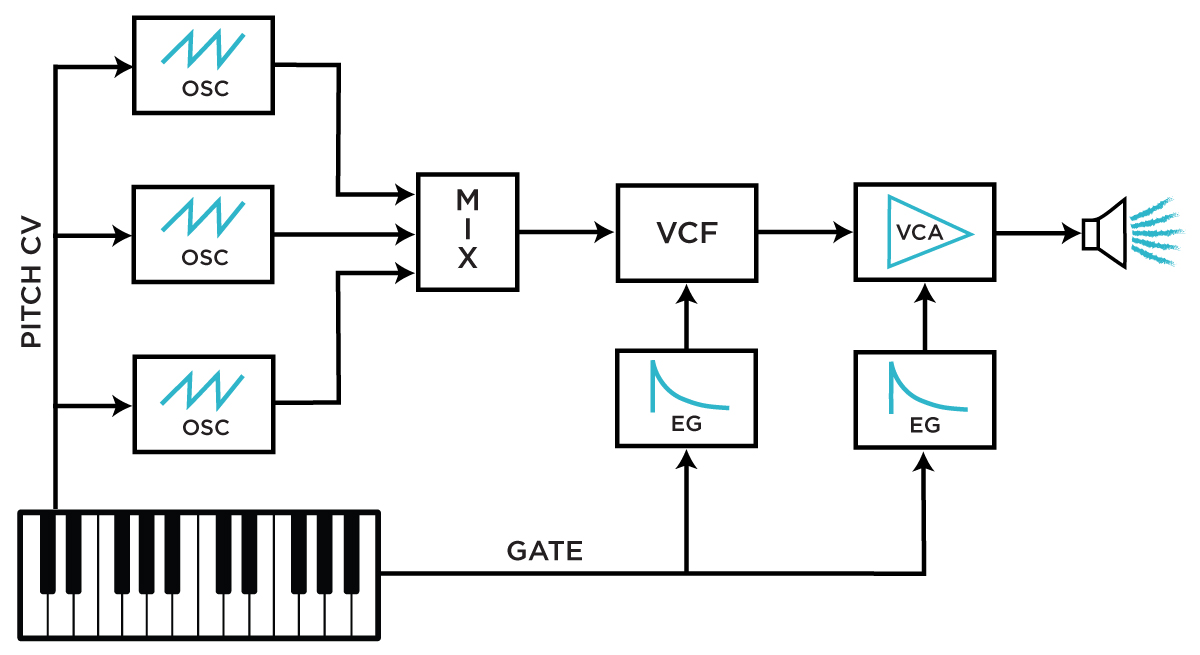 A typical synth voice patch
A typical synth voice patch
Despite the fact that synthesizers started penetrating popular culture with such recordings as Switched-On Bach by Wendy Carlos and the self-titled Emerson, Lake & Palmer album, big modular synthesizers were still inaccessible to the greater public, so the market drove manufacturers to develop more compact and cost-effective versions of the instrument leading to the creation of portable monophonic synthesizers like Moog's Model D, aka Minimoog. Minimoog was a single-voice synthesizer, although it featured three oscillators and a dedicated noise generator that could all be blended together in an onboard mixer resulting in rich, harmonically complex tones. On top of the amplitude envelope, Minimoog was also equipped with a second EG dedicated to shaping the contour of the filter cutoff frequency. This brings forward the idea that on top of the expected minimum list of modules required to makeup a synth voice, there is plenty of room for creativity and expansion.
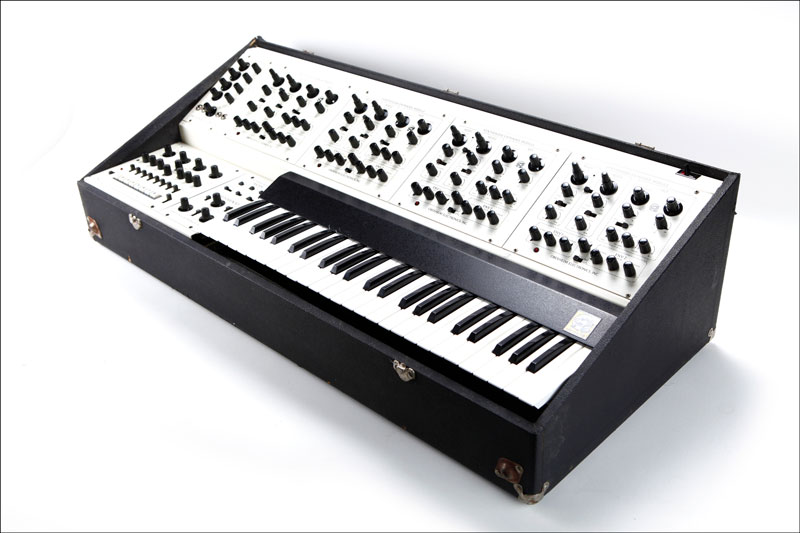 Oberheim 4-Voice
Oberheim 4-Voice
The next step was polyphony. Full polyphony on a synthesizer entails that every note of the keyboard is assigned to a dedicated voice. Historically, there was only one commercially available synth built around this architecture, Moog's Polymoog, and it proved to be an extremely expensive and not particularly reliable. The one-voice-per-key design wasn’t practical, but in truth, there aren’t many real-world situations when a performer would need to press all the keys on a keyboard at the same time. There had to be a solution for having fewer voices dynamically addressable from the same keyboard, much like in the early design of Warbo-Formant Organ by Bode, yet adapted to new transistor-driven manufacturing. The solution appeared in the ‘70s in the form of logic circuits that could cost-effectively handle voice-to-note allocation systems. This influenced the emergence of some of the first commercial polyphonic synthesizers, such as the Oberheim 4-voice. At this point quantifying polyphony with a number of "voices" in a synthesizer became standard. Hopefully now, phrases like “two oscillators per voice” or “one filter per voice” should make more sense to you if they seemed confusing before.
Although designing polyphonic synthesizers based on the wildest of your dreams is not super common in the Eurorack format of modular synthesizers, it is certainly possible and there are plenty of full-featured voices built around various synthesis concepts to make this a reality. But polyphony is not a requirement to enjoy the benefits of Full Voices. With all the essentials in place, they are a great way to achieve rich sonic results with minimum patching and thus serve as a great point of departure to explore the world of synthesis. In the remainder of this article, we’ll explore a few Full Voice Eurorack modules based around different synthesis paradigms.
Analog
Moog Mother-32 is a stand-alone semi-modular synthesizer that can be seamlessly integrated into a Eurorack system. The module is equipped with all of the necessary parts to deliver that rich, unmistakable Moog sound, in large part derived from the classic ladder filter. Mother-32 also features an on-board keyboard and a programmable 32-step sequencer which can also be used to control other modules in your system as it keeps growing.
Analogue Solutions (now-discontinued) Treadstone has everything an analog synth voice should have, and more than that. Besides the traditional subtractive VCO+VCF+Envelope+VCA combo, Treadstone features a dedicated sub-oscillator for extra bass, as well as a digital delay circuit. The module can be seen as a self-sufficient monophonic synthesizer, as all of its sonic capabilities are supplemented with a looping sequencer and a dedicated modulation oscillator. However, there are plenty of patch points on the module so that it can seamlessly integrate into a larger Eurorack system.
Olitronik Circuits's (now-discontinued) Micron is a compact, yet full-featured analog synth voice. Similarly to Treadstone, it is equipped with an additional sub-oscillator. The onboard filter can be driven into self-oscillation, and it features an auxiliary input for external signals. The most distinct feature of the Micron is its master overdrive circuit, which can act as a simple enhancer or as a much more extreme distortion effect.
Studio Electronics Tonestar 2600 is a synthesizer voice that pays homage to one of the most revered electronic instruments—ARP 2600. It consists of a fully analog oscillator with individual waveform outputs, a resonant filter with tracking capability, and a distinct bite defined by the drive parameter. Additionally, it provides two envelopes—an ADSR and AR—as well as a VCA with a unique feedback circuit. Many of the normalized parameters feature dedicated attenuators for specifying the amount of modulation applied. Its variety of modulation destination inputs are great for integrating other modules with the Tonestar 2600.
Intellijel Atlantis is essentially a tweaked and modified version of the classic Roland SH-101 synthesizer. It follows the same design principles of the original synth and is capable of delivering those familiar deep Acid basslines, yet with a few added improvements. Intellijel replaced the sawtooth oscillator core with a much more stable triangular core, and implemented an optional bass-boosting LP mode, as well as soft-clipping to the filter. Atlantis excels in deep, mean basslines and biting leads.
Pittsburgh Modular Lifeforms Voltage Lab is an excellent (but regrettably now discontinued) full voice module skewed towards the experimental nature of the West Coast synthesis. At the core of the Voltage Lab is the Complex Oscillator. Equipped with a ton of sound shaping tools like wave folder, linear FM, amplitude modulation, ring modulation, waveform cycling, and hard sync, the oscillator is ready to deliver the wildest and weirdest of sounds at any given moment. The modulation section is represented by a couple of function generators that can be used to perform the duties of envelopes, LFOs, slew limiters, and more. Then there are two dynamics circuits which combine 12db resonant filter, VCA, and percussive low pass gate to accommodate for a variety of applications. The loop is closed with the voltage controllable Delay. The system is optimized for chaos and unpredictable sounds with the inclusion of Sample and Hold, and Random voltage generator circuits, while a dedicated MIDI input and an onboard arpeggiator offer a more traditional approach to synthesizer control. Personally, we can’t wait to get our hands on this synth!
Digital
As I’ve touched upon earlier in the article, as long as there are elements in place to create articulations that separate individual notes, there is plenty of room for improvisation on what goes into a synthesizer voice. Digital format offers a lot of avenues for experimentation, making it possible to explore new types of synthesis and drastically decrease the cost of production, as well as the size.
Mutable Instruments Plaits is an incredibly powerful voice based on 16 different synthesis models—and though it has been discontinued, it has several modern third-party alternatives, such as After Later Audio's Pixie. It is as easily capable of generating dreamy melodies as it is glitchy percussion, and even speech synthesis. Essentially an improved and streamlined version of MI’s previous module Braids, Plaits truly takes the “macro-oscillator” concept to the next level. A clever normalization allows the module to be used as a free-running oscillator, but as soon as a patch cable is inserted into the ‘Trig’ input, an internal envelope is applied, and the module can be used as a full voice. The tone is defined by the ‘Timbre’ parameter knob that shapes the color of the sound in various ways depending on the selected algorithm. SSSR Labs (now-discontinued) Kotelnikov is technically more on the ‘wavetable oscillator’ side of things, but the on-board transient generator with a dedicated output easily allows it to be used as a full synthesizer voice. With a total amount of 80 waveforms, Kotelnikov provides loads of sonic textures. The internal fixed filter provides options to either keep the raw high-end of the waveforms crisp or remove it with a flick of a switch. The envelope generator can function in one of 3 modes—triggered AR, AD, or looping. The range of the envelope can also be altered between ultra-slow, normal, and snappy fast. Oddly, the envelope is not routed internally to the VCA circuit but instead set to control wavetable morphing and frequency modulation. However, the dedicated output allows it to be physically routed into the AM input, effectively shaping the amplitude level of the built-in VCA. Oh, and since the VCA is bipolar, the AM input can also be used for gnarly ring-modulation effects.
Noise Engineering Cursus Iteritas Percido belongs to the extended family of the company’s sound modules. Taking the original Cursus Iteritas dynamic wavetable oscillator as a core, the Percido version is expanded into a full voice with an extensive amount of options for adding an envelope to various parameters of the module. A particularly great feature of this voice is the Master Blaster control, which acts as a global bipolar envelope level control, allowing you to drastically alter the sound in an instant. Choosing CIP as a voice in your system is a sure way to fast-track you towards achieving dense industrial basslines, leads, and uncompromisingly distorted rhythms.
Note: There are several more full synthesizer voices in the Noise Engineering family of modules, and all of them are unique and fantastic. Make sure to also check out: Loquelic Iteritas Percido, Manis Iteritas, and of course Basimilus Iteritas Alter.
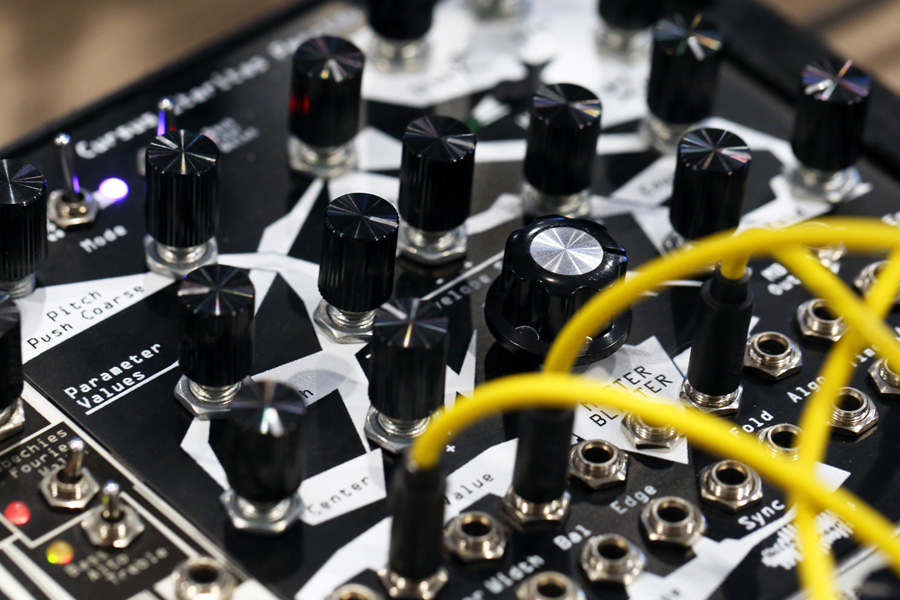
Endorphin.es Grand Terminal is capable of many things and being a full synth voice is certainly one of them. Designed around the concept of dual envelope generators, not unlike Make Noise Maths or Random*Source/Serge DUSG, Grand Terminal is taken on a whole new flight with a distinctly Endorphin.es feel and aesthetic. The envelope generators can double as 1V/Oct oscillators, and are supplemented with two multimode filters and a selection of DSP effects, such as shimmer, reverb, ping-pong delay, tape delay, and more.
Erica Synth Pico Voice packs eight different synth algorithms in mere 3HP. Karplus Strong, Chord generator, Wavetable synthesis, TB303 emulation, PWM, Supersaw, Wavefolded Oscillator, and Harmonic Saturation—all are easily available at the press of a button. In cases when space is an issue in your system, and you really need a set of compact, yet feature-packed tools, Erica’s Voice is an excellent choice.
Modal / Physical Modeling
Mutable Instruments Elements / Rings are possibly some of the most loved and recognizable synth voices in the Eurorack community. These two are listed together as both essentially run on the same physical modeling synth engine, which as it happens is also available in the above-mentioned Plaits module albeit in a rather limited form. Elements features a dedicated ‘exciter’ section which is comprised of pulses, noise generators, and samples—all designed to ping and drive the bank of 64 bandpass filters. The gorgeous-sounding resonators can be set to model bowed, wind, and percussion instruments, and the generous amount of patch points allows for complex morphing between sounds, resulting in full-bodied, otherworldly timbres. Elements also includes a lush reverb, great for atmospheric effects. Rings in itself is pretty much Elements sans exciter and reverb, but this is compensated by a much more streamlined system of navigation through various resonator and polyphony modes. Although it is quite common to expect pleasant and beautiful sounds from these modules, they do have a much more sinister side achievable via audio-rate modulation applied to the FM input.
2hp Pluck is the smallest synth voice available on the market. In a space usually designated to blank panels and mults, Pluck provides a Karplus-Strong string-modeling synthesizer with 4-note polyphony. Pairing it with a CV/Gate-compatible keyboard like Arturia Keystep or a portable sequencer like Korg SQ-1 (plus maybe some reverb or delay effects) is sufficient for generating myriad evocative melodies and beautiful textures.
Intellijel Plonk was developed together with Applied Acoustic Systems, and the module truly has a voice of its own. It excels at percussive and textural sounds via a selection of plate, membrane, string and beam models. A unique feature of Plonk is its voltage-controllable patch randomization which always delivers exciting, complex, and pleasantly unpredictable results.
Intellijel Rainmaker is a beast. It is mostly known as a dual 16-tap rhythmic and up to 64-tap comb delay. With a flexible routing system, internal modulation, detailed per-tap programming there really isn’t a delay effect that can escape the scope of Rainmaker’s abilities. But we are not here to talk about delays, are we? With certain settings in place, Rainmaker can be used as a full physical modeling voice. The Trigger input/button on the device is assignable, and among the options are Ping and Shaped Pulse, which can be used to excite the comb resonator or the rhythmic delay sections. While sound shaping in the rhythmic delay section is achieved by individually tweaking volume, panning, pitch, filter type, cutoff frequency, and resonance of each delay tap, the comb resonator is shaped through a large selection of Comb Patterns and 4 Comb Feedback Patterns emulating responses of physical instruments: Raw, Guitar, Sitar, and Clarinet. This opens up so many options for sound design: and while one section is utilized for generating the tone, the other can still perform processing duties, making Rainmaker capable of incredibly dense, harmonically rich textures.
You can see now that there are plenty of options in Eurorack for full-featured, ready-to-play voices that only need a single trigger and CV source to get things going. And although these devices can be plenty useful for a seasoned synthesist, the presence of all essential elements under one panel can serve as a great place to start your journey into the world of Eurorack.

